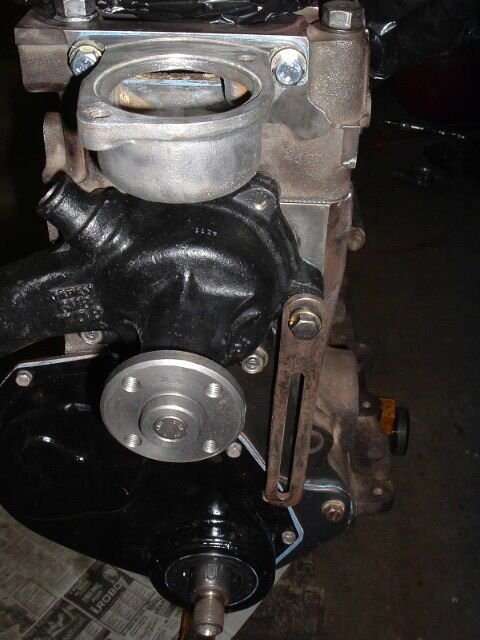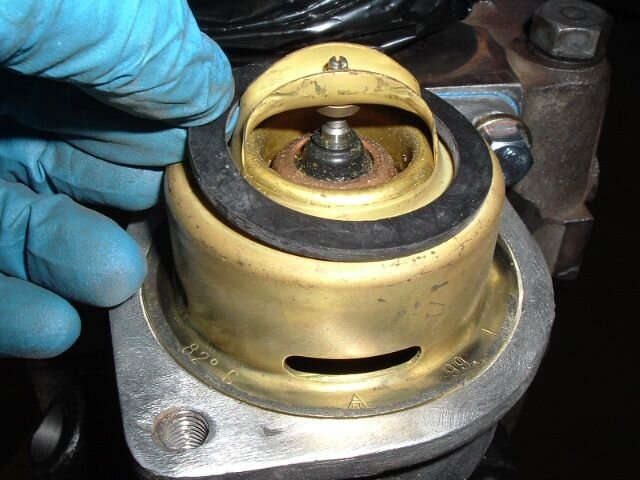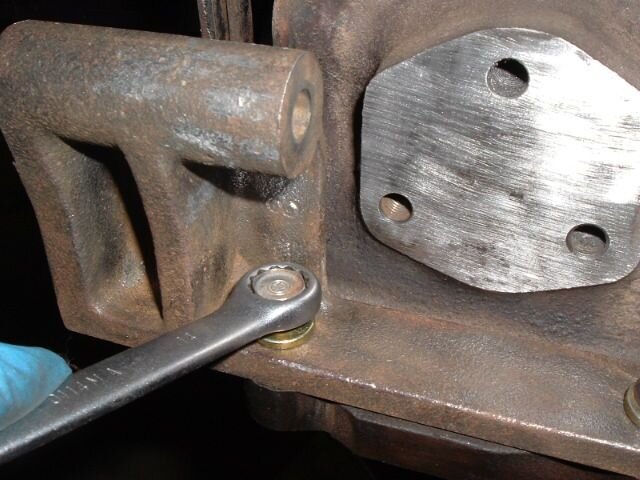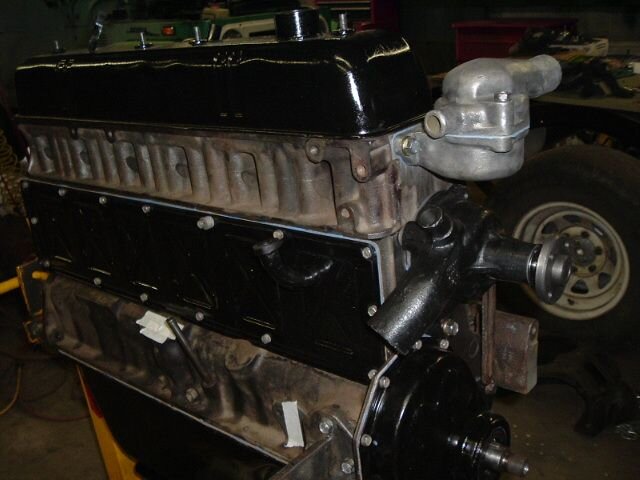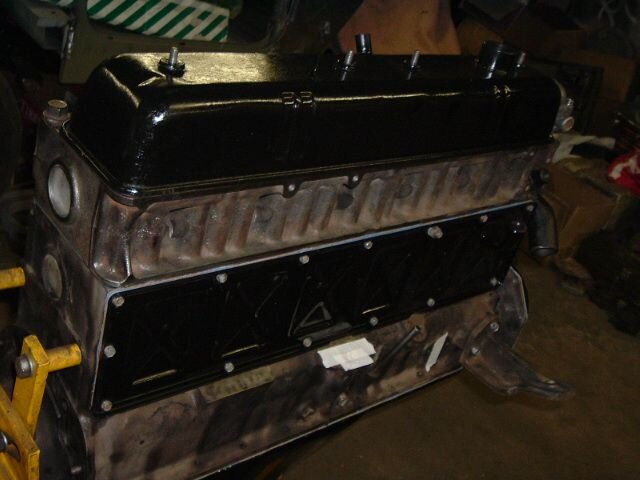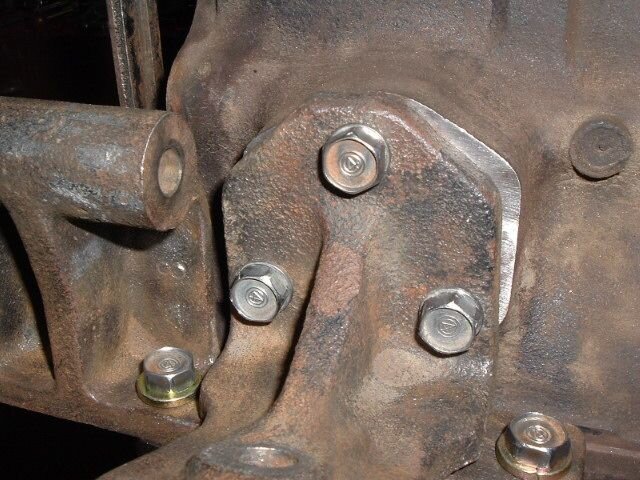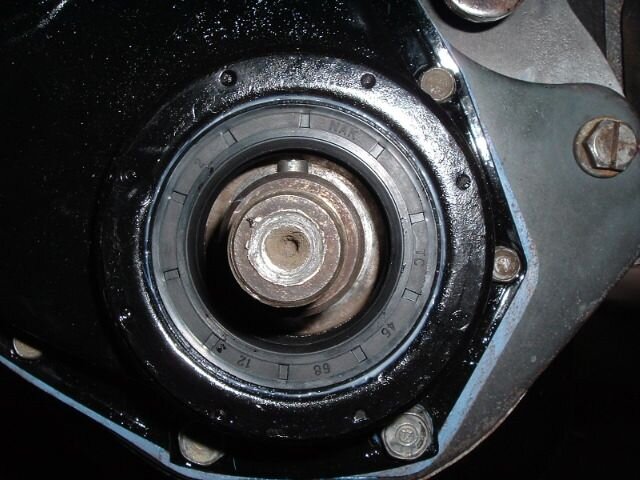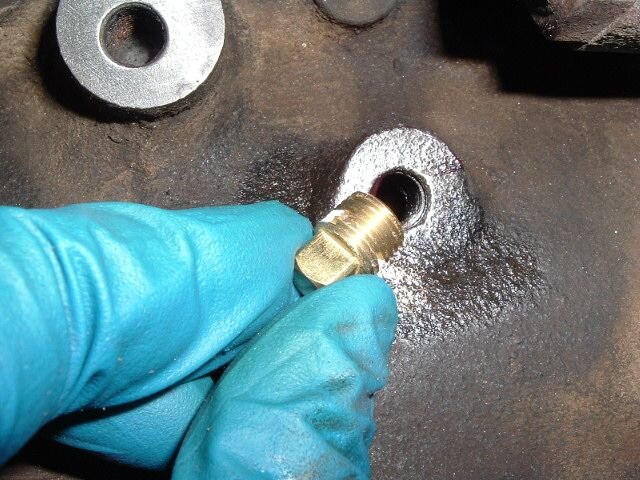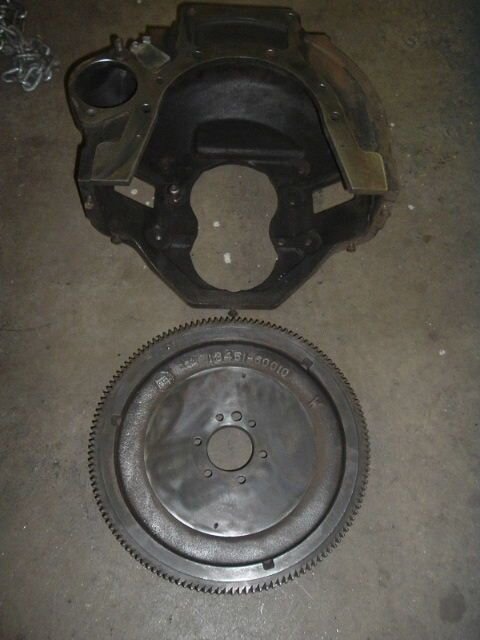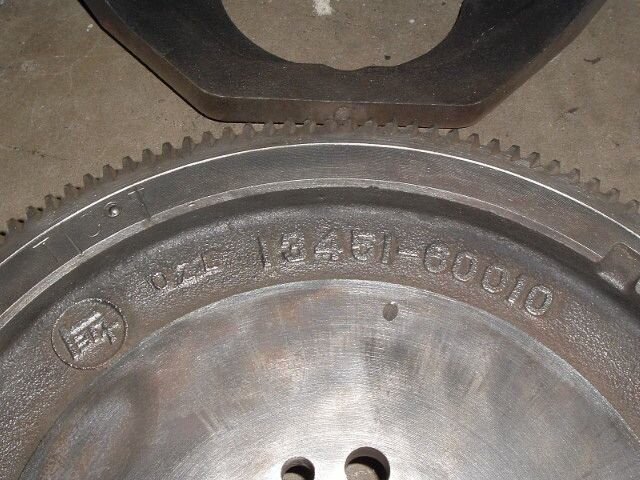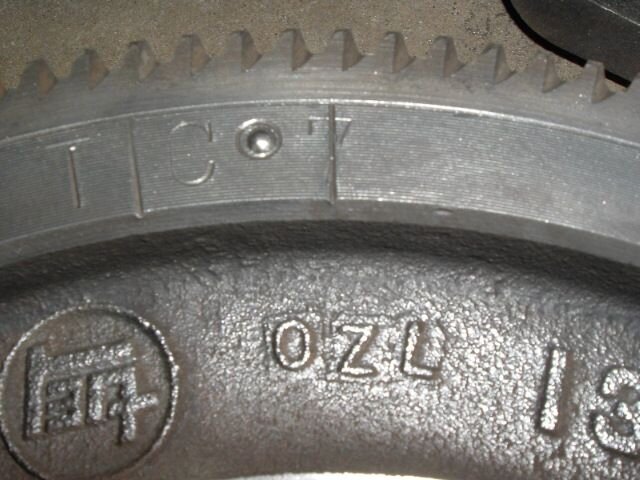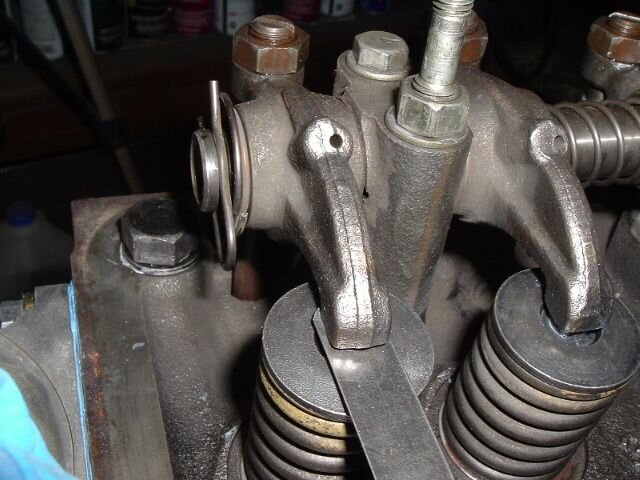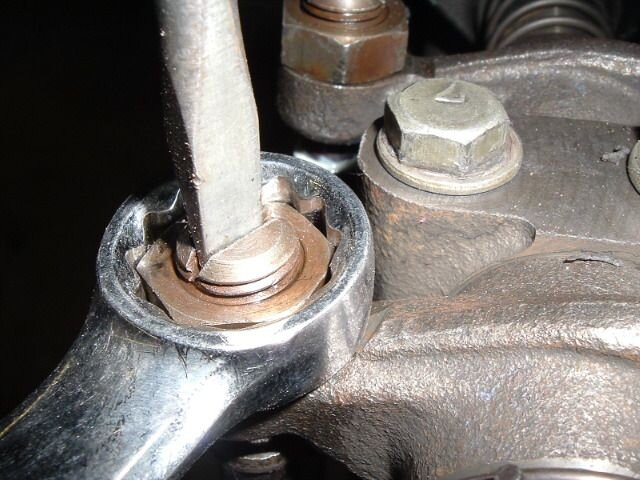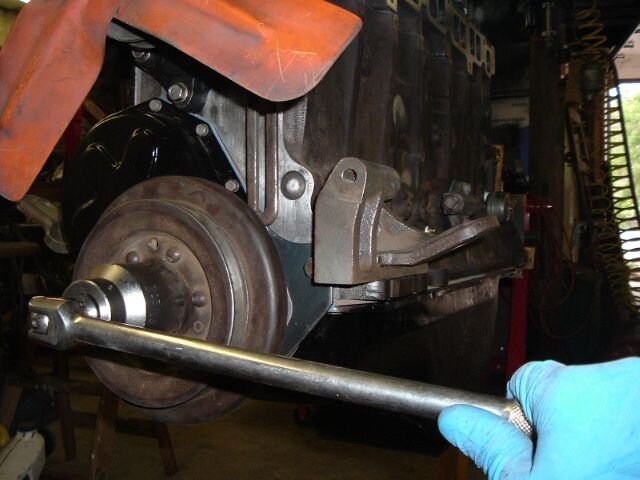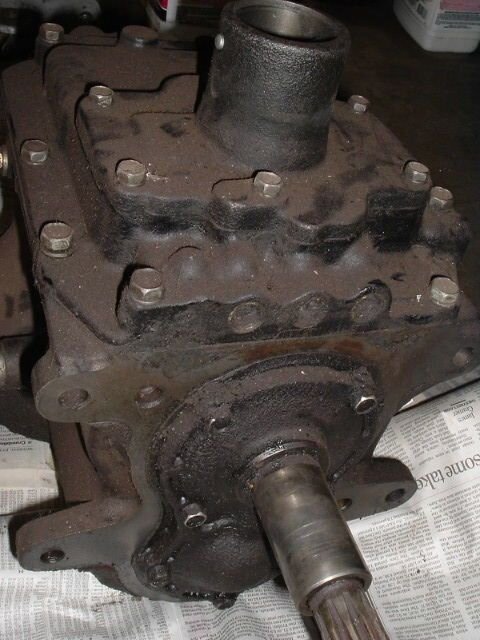I set the valve clearances nominally while I still had the engine on the stand, again, much easier. On F series Land Cruiser engines, you want the exhaust valves set to .014" and the intakes to .008". These engines are pretty tolerant of valve clearances that aren't precise, but you always want at least some lash so the valves close all the way. Too much lash and they won't open enough, but the only big down side to that is not quite as much flow and power as would be the case when they open all the way.
You are supposed to set the clearances while the engine is at operating temperature, but unlike a chevy V8, you don't have to do it while the engine is running, spewing oil everywhere. But to set them nominally while the engine is at room temperature, you can get them plenty close enough for the rig to start and run.
To measure the clearance, slide your feeler gauge between the rocker and the valve stem, as shown in the top photo. This was the exhaust valve for #1. Then, loosen the locking nut with your 17mm wrench and tighten or loosen the adjusting stud with a screwdriver, as shown in the middle photo. Slide the feeler gauge in and out as you turn the adjusting stud, what you want is where it just catches but can still be slid in and out. Once the clearance is set, tighten the locking nut with the 17mm wrench while holding the adjusting stud in place with the screwdriver.
To get each valve to it's clearance position on the cam, turn the crank. It's easy when it's on a stand to do it with the "big ol' nut" on the front of the crank pulley, but you can't turn it this way when it's in the cruiser,there isn't enough space behind the radiator frame. To turn the crank while the engine is in the cruiser, you can either bump the starter, or put it in high gear and push the whole rig a little. Another method is if you have the bellhousing dust cover off, you can use a pry bar or big screwdriver on the flywheel. That's slow, but it works. I've used all these methods to turn the engine, and by far the easiest is the crank pulley nut when the engine is on a stand, as shown in the bottom photo.



